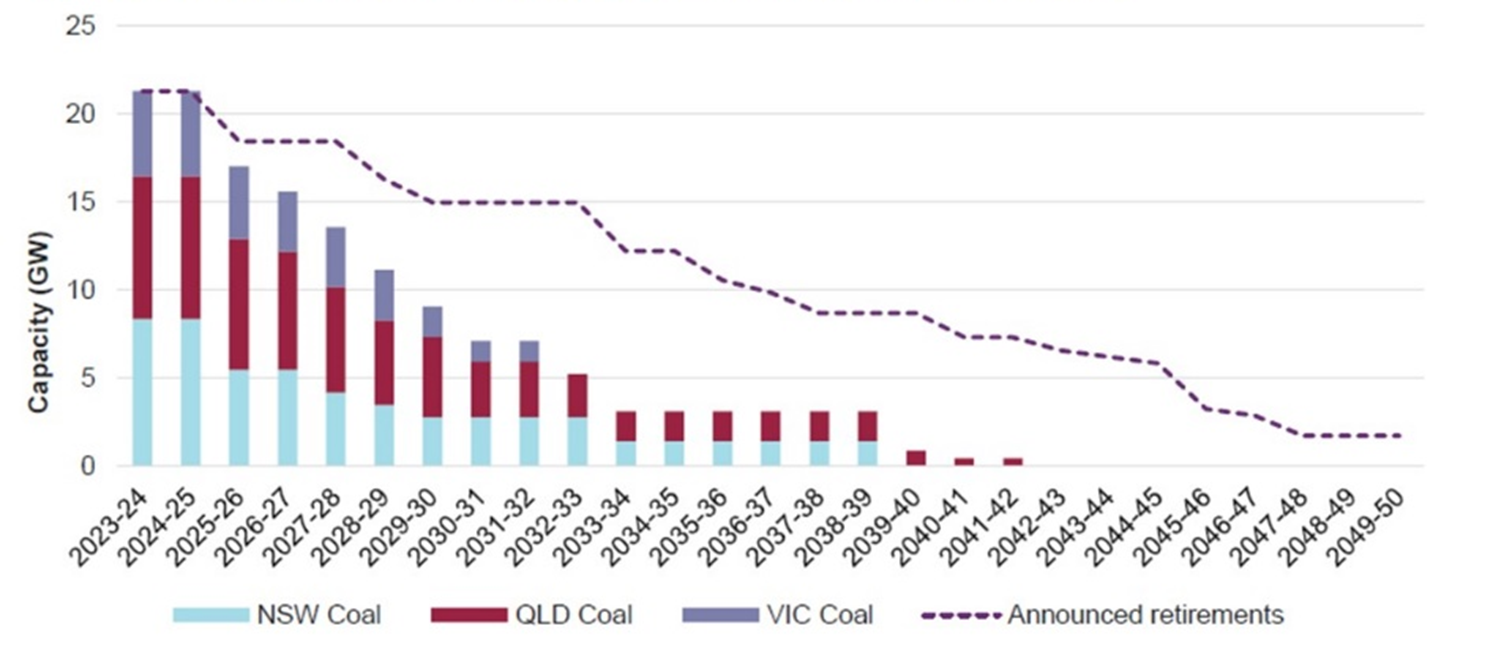Australia Overview: Investing in the Next Renewables Superpower
by RES | aug 31, 2023 | Tid det tar att läsa: 5 min

As the world transitions from the fossil fuel era to clean energy, Australia maintains the upper hand with unparalleled resources in solar and wind energy. With a changing political landscape and climate change motivating public sentiment, the country is striding towards a renewables boom. In this article Matt Rebbeck, CEO Australia at RES, provides an overview of the Australian market, including the challenges and extraordinary opportunities in the Land Down Under.
Consistent with all the geographies that we operate across, electricity prices in Australia have significantly increased, driven by increased gas and coal costs and an increasingly unreliable fossil fueled electricity generation fleet. Although there are a number of headwinds in the market, namely supply chain issues, increasing commodities prices and inflation, now is a time of great opportunity for new renewables in Australia.
In June this year, Australia faced an unprecedented suspension of the National Electricity Market (NEM), largely due to:
- the lack of availability of coal generators;
- high fuel costs (driven in part by the Russian invasion of Ukraine); and
- coal supply interruption to some generators.
This was compounded with an unseasonably high demand for energy, due to an early cold snap in North-Eastern states. Although the market has now resumed normal service, this event highlighted the need for significant amounts of new renewable energy to be added to the system to ensure a low-cost secure electricity supply into the future.
Australia’s energy market is still heavily influenced by coal generators because 60% of generation is still coal based…but that’s all about to change.
Figure 1: Annual electricity generation. Graph from Clean Energy Council Australia Report 2022 p9
75% of Australia’s ageing coal fleet is already operating beyond its original design life and coal fired power stations are no longer a reliable or sustainable source of energy.
The political landscape over the past 10 years has seen a lack of system planning from Federal Government, with no framework to proactively plan for the retirement of coal plants. Concern about Climate Change and support from State Governments has largely pushed the growth of the Australian renewables industry, but a national approach to long-term planning for the transition to renewables-based economy failed to materialise, until recently.
The World’s Next Renewables Superpower
This year’s Australian Federal Election has seen a change in Government and Australia is going through a material change in sentiment and demand for renewables. Consistent with European policies to accelerate the transition and Biden’s Inflation Reduction Act, the new Federal Government is moving quickly to address rising electricity costs and climate change. The government aims to reduce Australia’s emissions by 43% by 2050, increasing the share of large-scale renewables to 82% by 2030. They have already:
- committed to $20bn ‘rewiring the nation’ funding for a new transmission network;
- included lowering emissions to the National Energy Objectives (along with ‘lowest cost’ and ‘reliability’); and
- declared Australia’s first offshore wind zone.
Coal retirement will also be a key feature of the NEM, with plants withdrawing faster than announced and a significant amount of new generation capacity coming forward to replace it.
By 2050, we can expect the full retirement of coal plants with an 800% increase in renewable energy capacity (an additional 125GW) and 46GW/640GWh of dispatchable storage.
The government also foresees potential for the country to become a “hydrogen superpower” which would require the addition of an incredible 560GW, also by 2050.

Figure 2: Forecast coal retirements, Step Change technology and regional outlook. Graph from AEMO Draft 2022 ISP, p46
RES activity in the region
As well as our large solar and onshore wind portfolio in the region, RES has taken the significant step of entering the offshore wind development market and is advancing projects in the Government’s identified offshore zone, Gippsland, Victoria, and further areas off the coast of Australia.
The initial projects in Victoria will provide power to over a million homes and support critical government decarbonisation targets. The development, construction and operation of these offshore projects, plus associated supply chain, will provide significant employment opportunities in the country. There is significant potential to develop an environmentally sensitive offshore wind industry in Australia that plays a meaningful role in addressing the climate crisis, complimenting the already established and successful onshore wind industry.
Leveraging the depth of experience from our experts in the UK and Europe, our team in Australia have been progressing technical and ecological studies, and engaging stakeholders for the offshore projects. The next phase of the development process will include further studies and extensive consultation with the local communities.
We have extensive European experience in offshore wind having supported the development of over 2.2GW of offshore projects. As a pioneer within the offshore wind industry since its inception in the 1990s, RES’ portfolio includes significant projects such as East Anglia One, St Brieuc, Lynn and Inner Dowsing, Racebank and Lincs. We were also involved in the early floating offshore industry through the Dounreay Tri floating offshore project and provide O&M services to the offshore industry.
We’ve got the targets but now we need to overcome the challenges to secure delivery
Grid continues to be a significant challenge in Australia, the pure size of the country means it already has the world’s longest interconnected network, with over 40,000km of transmission line. This long, skinny grid, suffers from low system strength and stability issues, partly due to the high penetration of residential solar PV. This creates challenges for connecting utility scale renewable energy projects, challenges that will appear in all our markets at some point as the penetration of renewables increases.
The silver lining here is that Australia (and RES) are at the forefront of new grid solutions, including synchronous condensers and emerging technologies such as grid forming inverters (virtual synchronous machines). Battery storage is also key to the clean energy transition and a critical part of providing a secure and stable energy supply for the Australian electricity market into the future. RES has significant experience in the development, construction and management of batteries across the globe.
Ultimately, however, more transmission is urgently required across the country, with the popular catchphrase “no transition without transmission” echoing across the halls of clean energy conferences across Australia.
The future is bright Down Under
Given the vast potential in the country, Australia’s renewable energy sector is working hard to ensure that the promise of the “world’s next renewable superpower” becomes a reality.
RES’ team in Australia is increasing at a rate that matches the growth of the industry – with well over a hundred employees across the country. Having a local team with decades of experience in the region and feet on the ground is key to ensuring compliance and consideration of all the factors involved with developing, constructing and operating renewable energy assets in Australia.
With successful wind, solar and storage development projects across Australia, and a local asset management portfolio exceeding 3GW, our team has real-life knowledge of the regulatory and environmental landscape unique to Australia, and also the added benefit of calling on the experience and skill from our other teams and projects around the globe. RES is certainly best placed to shepherd Australia into its new age of clean energy – we’re braced and ready!
